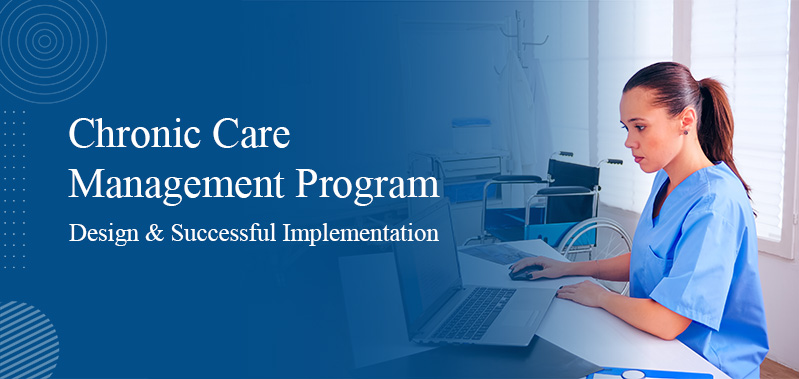
What Covers in Preventive Medicare Services
The government designs the medicare program for older people with disabilities who turn 65. You can enroll in the program three months before your milestone birthday and continue for a maximum of three months following. You'll be registered in Medicare by default if you get Social Security benefits. Otherwise, make a note of the sign-up period on your calendar to avoid having to pay higher premiums.
However, CMS (Medicare) covers a range of preventive services, and it's imperative to be aware of the covered services and the requirements to live a healthy life without burdening your pocket.
What is Preventive Care Services?
Preventive care services prevent an individual from health emergencies, health issues, injuries, and diseases. Through this service, your physical helps you identify the health risks and guides you to live a healthy life without any burden to your pocket. Doctors discern the health risks or catch the disease at the early stage of life and provide you with healthy lifestyle modification.
Furthermore, preventive care services improve your health by identifying the risks and saving you money. For example, heart disease treatment is expensive, and everyone can't afford it, but healthy lifestyle modifications are in your hands and can help people stay healthy.
Coverage of Preventive Services under Medicare
Medicare Part B covers numerous preventive services, meaning that Medicare beneficiaries will not incur any out-of-pocket expenses, such as copayments or deductibles, for these services.
Patients may face higher out-of-pocket expenses if they visit providers who do not accept the assignment of preventive services and if they are enrolled in a Medicare health plan or possess other insurance. Furthermore, patients will incur additional costs if they exceed the covered frequency of preventive services, such as undergoing more than one annual depression screening or more than one annual alcohol misuse screening.
Upon enrolling in Medicare, you become eligible for a singular "Welcome to Medicare" appointment. During this initial visit, your physician evaluates your present health status and identifies any future healthcare services or assistance you might require.
During this primary appointment, your medical practitioner collects your medical history and gathers essential data such as your weight, height, blood pressure, and vision. Utilizing this information, your doctor will determine any additional preventive services you may need, provide referrals, and make screening recommendations.
Following your "Welcome to Medicare" visit, it is recommended that you schedule an annual wellness checkup with your healthcare provider. The annual Medicare Wellness visit is designed to develop a personalized preventive healthcare plan tailored to your specific risk factors and medical history.
On every visit, you will receive the following preventive care services:
- Age-appropriate screenings and tests
- Appropriate immunizations and shots
- Referrals for other services
- A vision test
- Height, weight, and blood pressure measurements
- Calculation of your body mass index (BMI)
- Cholesterol check
- A mental health assessment
- A cognitive assessment
- Hearing test
The Role and Benefits of the Medicare Annual Wellness Visit
The Medicare Annual Wellness Visit serves as an annual appointment wherein a patient interacts with clinical staff (with minimal provider involvement, as required) to create or update a personalized prevention plan. This plan is tailored to the individual's current health status and risk factors, with the primary aim of preventing diseases and disabilities.
What does the Medicare Annual Wellness Visit have to do with preventive services? Apart from being recognized as a preventive service in itself, it also serves as an opportunity for the delivery, recommendation, or scheduling of other preventive services in addition to those mentioned earlier. Part of the Medicare Annual Wellness Visit's requirement is establishing a future schedule for preventive services, enhancing the convenience of receiving necessary preventive care in a single encounter for patients and providers. This convenience is pivotal for patients, and it also proves financially advantageous for healthcare providers, as preventive services aid in early disease detection (when treatment is most effective) and augment the visit's financial returns (further details below).
Reimbursement for Preventive Services from Medicare
As previously mentioned, providing the Medicare Annual Wellness Visit is financially beneficial for medical practices, with an approximate reimbursement of $170 for the initial visit and $135 for subsequent visits. This figure increases when appropriate preventive services are offered alongside the Annual Wellness Visit. Assuming a conservative estimate of eligibility frequency, medical practices could see their revenue increase by over $360 per patient annually when delivering a full range of preventive services to Medicare patients. With 50 patients receiving these comprehensive services, this could translate to approximately $18,000 in annual reimbursement associated with preventive care. In many cases, these services can be completed during a single visit.
Here is a breakdown of the 2020 average reimbursement rates for preventive services commonly administered alongside the Medicare Annual Wellness Visit, as reported by the Centers for Medicare & Medicaid Services (CMS) Physician Fee Schedule:
- Advance Care Planning: $86
- Annual Depression Screening: $18
- Annual Alcohol Abuse Screening: $19
- Alcohol Counseling: $26
- Smoking Cessation Counseling: $16
- Cardiovascular Risk Counseling: $26
- Obesity Counseling: $26
How to Avoid Denials for Preventive Services
In addition to ensuring accurate coding for Medicare preventive services, healthcare practices must also confirm the most recent date on which their patients received these services. This confirmation is crucial to establish the patient's eligibility for the next service, thus preventing denials arising from frequency restrictions. Practices have two primary methods for this verification:
- Automated Verification
Healthcare providers can utilize the Health Insurance Portability and Accountability Act (HIPAA) Eligibility Transaction System, known as HETS, as their primary source for Medicare patient eligibility and liability information. However, implementing this system can be complex and costly, requiring developing or acquiring specific tools to meet access requirements. Many practices opt for a more streamlined approach by partnering with vendors like Prevounce, which has already completed the necessary steps for electronic eligibility transactions and office automation.
- Manual Verification
This method typically involves making phone calls, using a clearinghouse, or accessing a Medicare administrative contractor (MAC) portal for verification. Manual verification, while effective, is more time-consuming compared to automated processes. Furthermore, if initial verification attempts encounter challenges, it may require additional staff follow-up to ensure accurate verification is obtained.




